How to Grow Kratom Plants
How to Grow Kratom Plants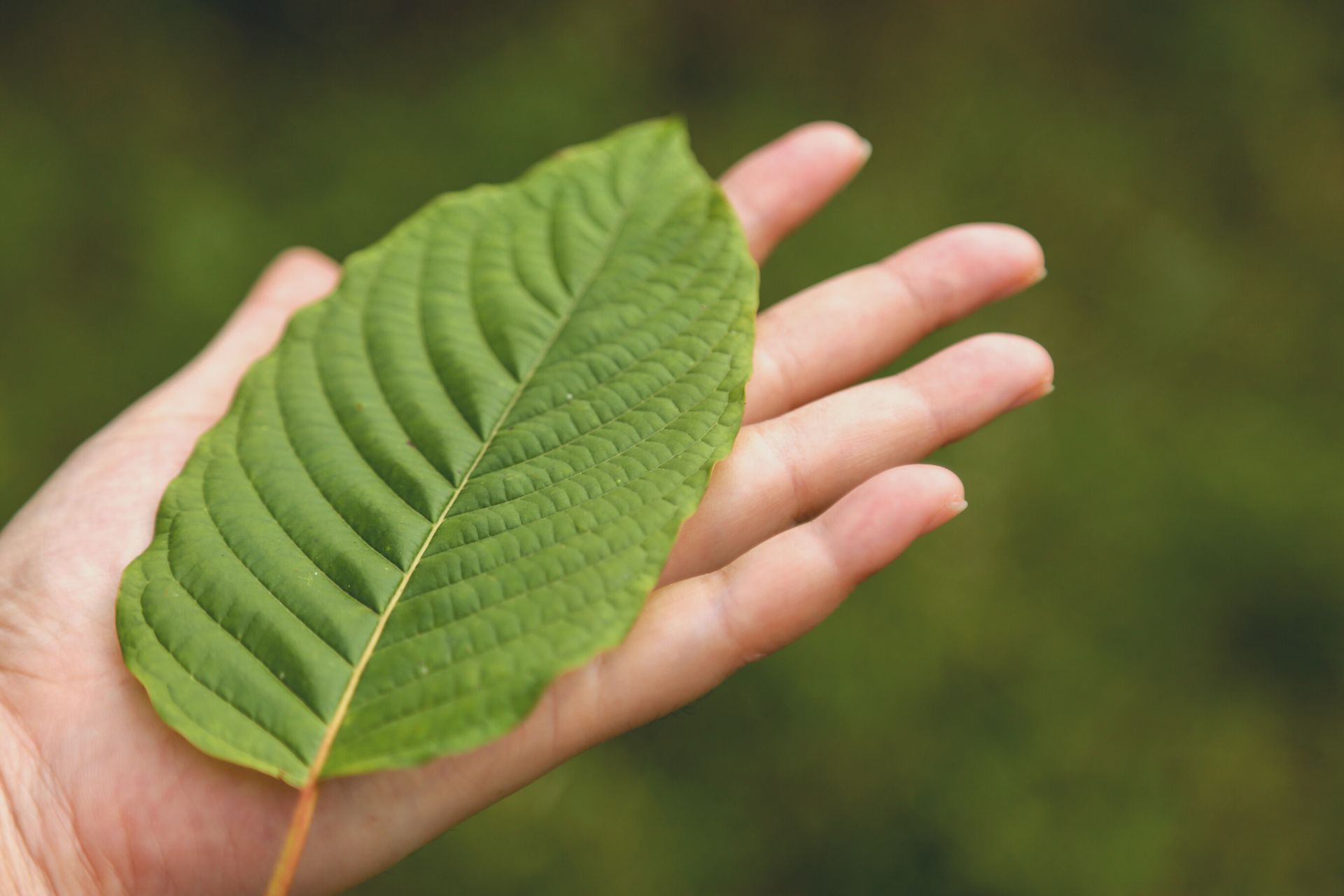
Contents
Keep reading to discover whether you can legally grow kratom at home and find out how to meet its cultivation requirements for the best results.
Let’s dive in.
What you need to know about the kratom plant
Mitragyna speciosa, or kratom, is a tree that grows naturally in Southeast Asia. The evergreen plant is native to countries like Thailand, Malaysia, Vietnam, Indonesia, and Papua New Guinea.
The kratom tree belongs to the coffee family and can grow up to 82 feet tall in the tropical jungles of Asia. As it matures, the leaves’ veins turn different colors, from white while it’s young to green in the middle, and red when fully ripened.
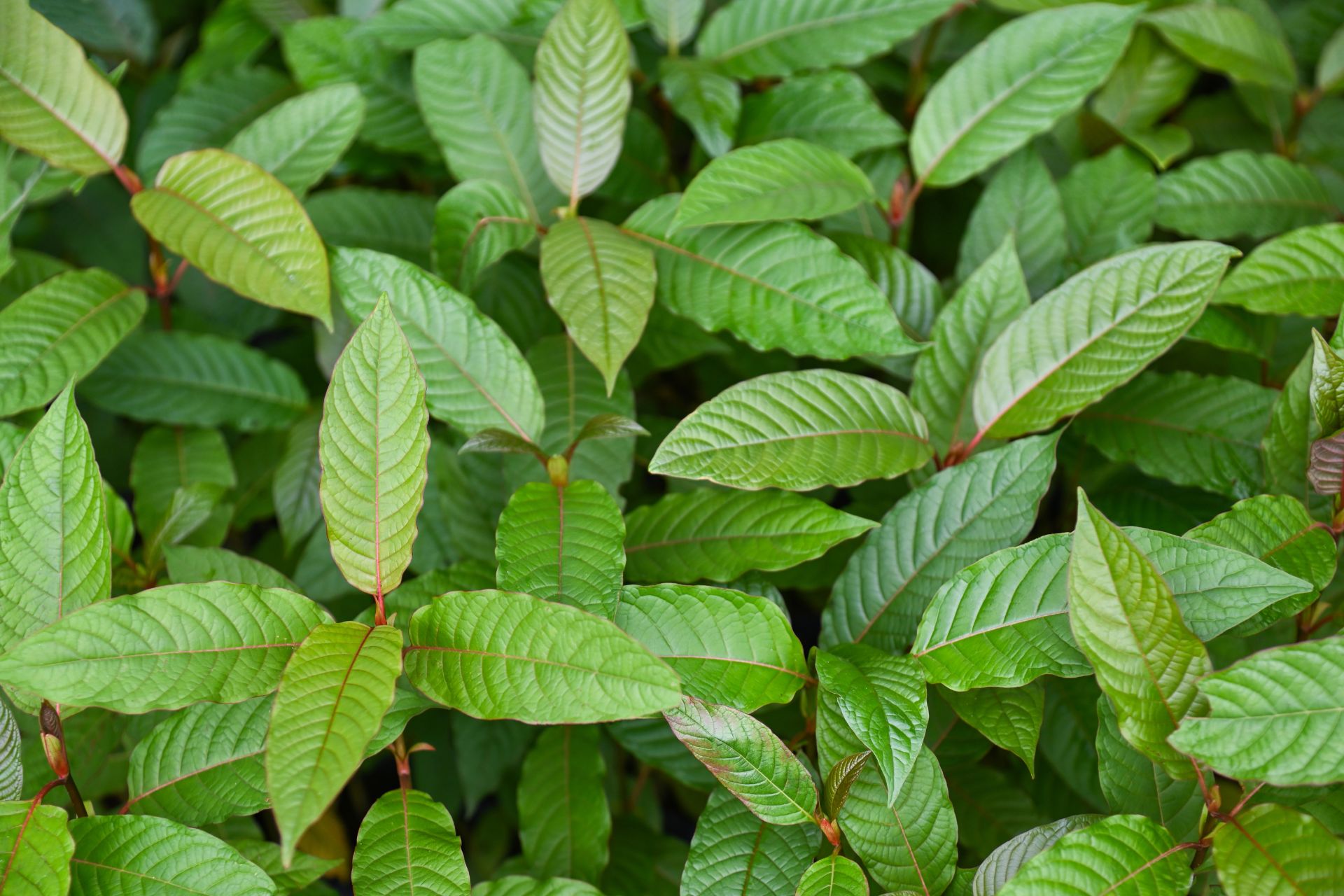
Farmers harvest these leaves at various stages in the growth cycle to get different strains, depending on the vein color. These include red, green, and white kratom.
Traditionally, people plucked and chewed the fresh leaves to boost their energy while performing manual work. In some communities, the herb was an important aspect of their religious ceremonies and culture.
Though the origins of kratom are in Asia, the herb is now popular worldwide. Southeast Asians brought the plant to the United States while migrating in the 1990s. Its use was limited during the 20th century but started rising after people discovered the herb’s potential benefits.
The leaves contain various alkaloids, with mitragynine and 7-hydroxymitragynine (7-OH) being the main ones. These compounds interact with the body, reportedly offering energy and upliftment in lower doses, and euphoria and sedation in higher amounts.
As the herb’s demand increased, vendors started shipping the leaves from Southeast Asia. Since they lose potency quickly, crushing them into powder became a viable solution. Enthusiasts now wonder how to grow kratom in their gardens to access the herb’s benefits.
How to grow kratom
When cultivating kratom, it’s essential to understand the tree’s needs and preferred climates. It thrives in tropical jungles with consistent rainfall, performing well in a hot and humid environment.
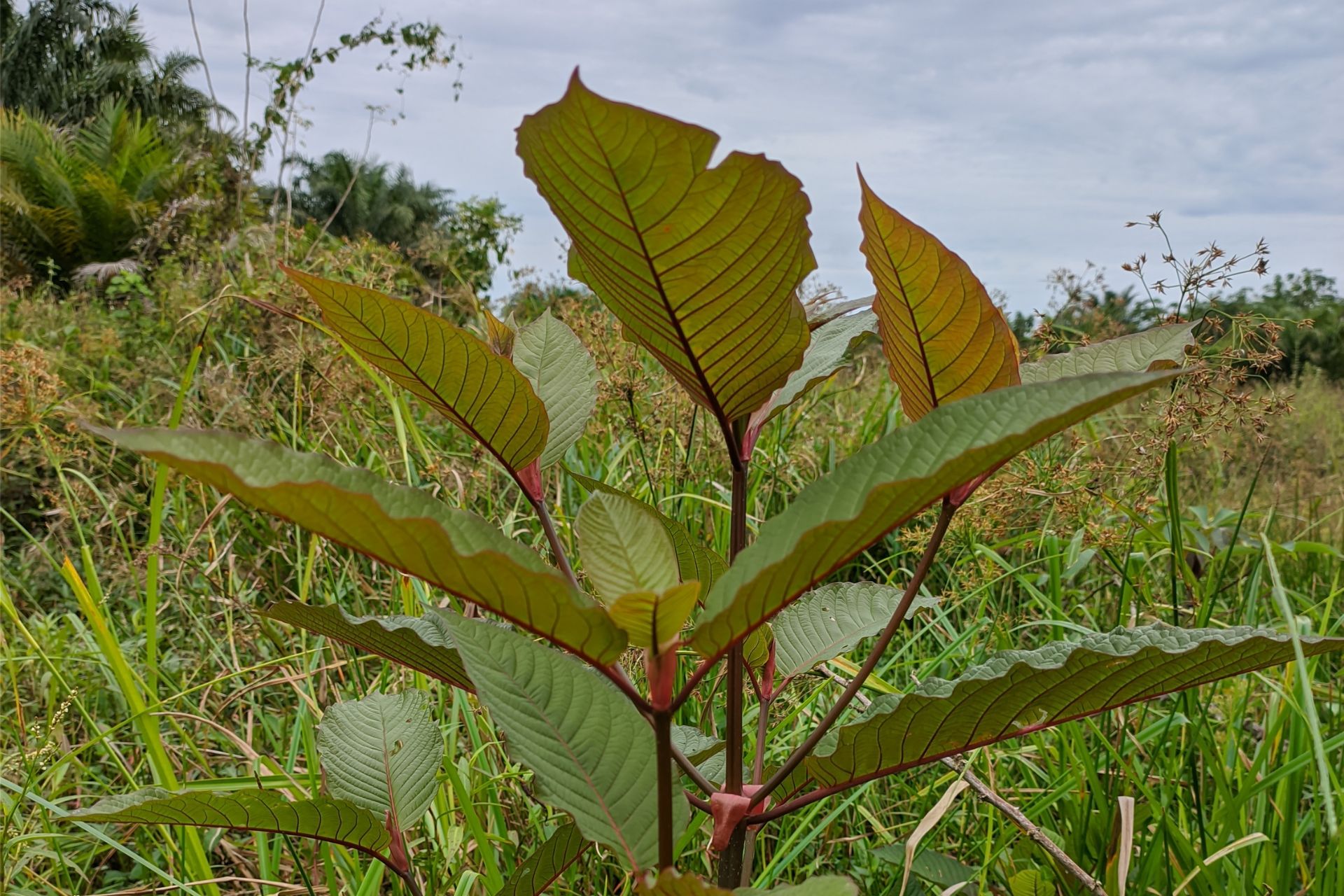
You should provide similar conditions to grow a big kratom tree that supplies you with healthy and alkaloid-rich leaves.
Seeds or cuttings?
When growing kratom, you can choose between seeds or cuttings. The former is said to be more challenging since it must be super fresh to germinate. Some may not sprout since they might be too old or dry.
Plant multiple seeds to increase the chances of a few forming roots and maturing. Sow them in moist soil with proper drainage to improve the probability of successful germination.
If you’re a novice grower, buy cuttings from reputable cultivators to grow the plants without germination. Cuttings are small branches chopped off from a live kratom tree and have better survival chances than seedlings.
They need time and proper care to form roots and mature into healthy plants. Place the shoots in a healthy growing medium or peat moss. The soil should be moist but not overly watery to reduce the risks of fungus development.
Keep the cuttings in a sealed bag away from direct sunlight until they form roots. Gradually open the container to help them build tolerance against lower humidity.
After rooting kratom cuttings, remove them from the bag and transplant them into your garden or grow room. Introduce the young plants to outdoor sunlight or artificial light if keeping them indoors.
Soil
One of the main reasons kratom performs well in Indonesia and other Southeast Asian regions is the rich soil. The trees require a fertile growing medium with high humus levels to reach their maximum potential.
If growing kratom from seeds, the soil should be moist with less drainage to provide the right conditions for germination. After sprouting, keep the medium hydrated to encourage the growth of healthy plants.
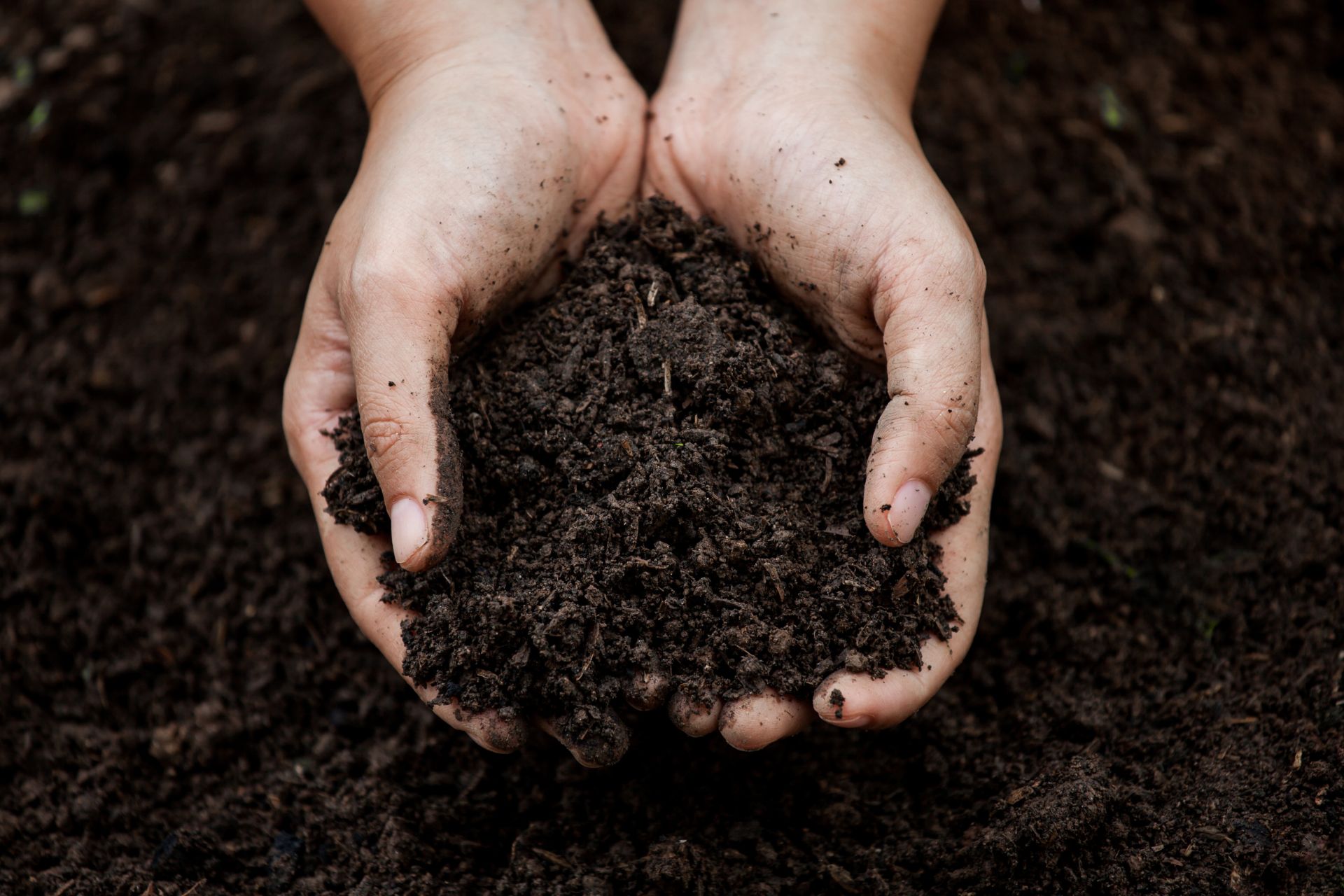
The best soil for kratom cultivation should be neutral, with a pH of 5.5–6.5. Too much acidity causes the deficiency of major nutrients like potassium, phosphorus, and nitrogen. It also results in aluminum toxicity, which can affect root development and lead to stunted growth.
Use basic materials like lime to lower the soil acidity. Once you correct the pH, add compost, wood ash, or bone meal to improve the medium further. Ensure you maintain the correct temperature and relative humidity and provide coolness by installing a fan.
Some enthusiasts prefer to grow kratom hydroponically to achieve more optimal results. This system involves cultivating crops in a water-based mineral solution. Some farmers use substrates like perlite or coco coir rather than soil.
Though a hydroponic setup is an effective way of growing kratom, establishing and managing it is expensive. The system requires specific tools and equipment and consumes more water and energy.
Nutrients and water
Kratom trees receive plenty of rainfall, sunlight, and organic nutrients in tropical jungles. Mimic these environmental conditions to boost growth when cultivating this plant. It’s a heavy feeder that requires a regular supply of micro and macronutrients.
It’s essential to note that even with the right conditions and minerals, many kratom seeds don’t sprout. They lose their ability to germinate within a few days after falling off the tree. Since they’re shipped from Indonesia, it can be challenging to get fresh seeds.
A mature kratom tree requires more nutrients to support its massive size, boost productivity, and increase pest and disease resilience. Add a fertilizer with high nitrogen, phosphorus, and potassium levels to the soil.
Avoid adding excess inorganic manure to the growing medium to prevent issues like nutrient burn. Applying organic fertilizers like compost can boost fertility and introduce beneficial microorganisms to the soil.
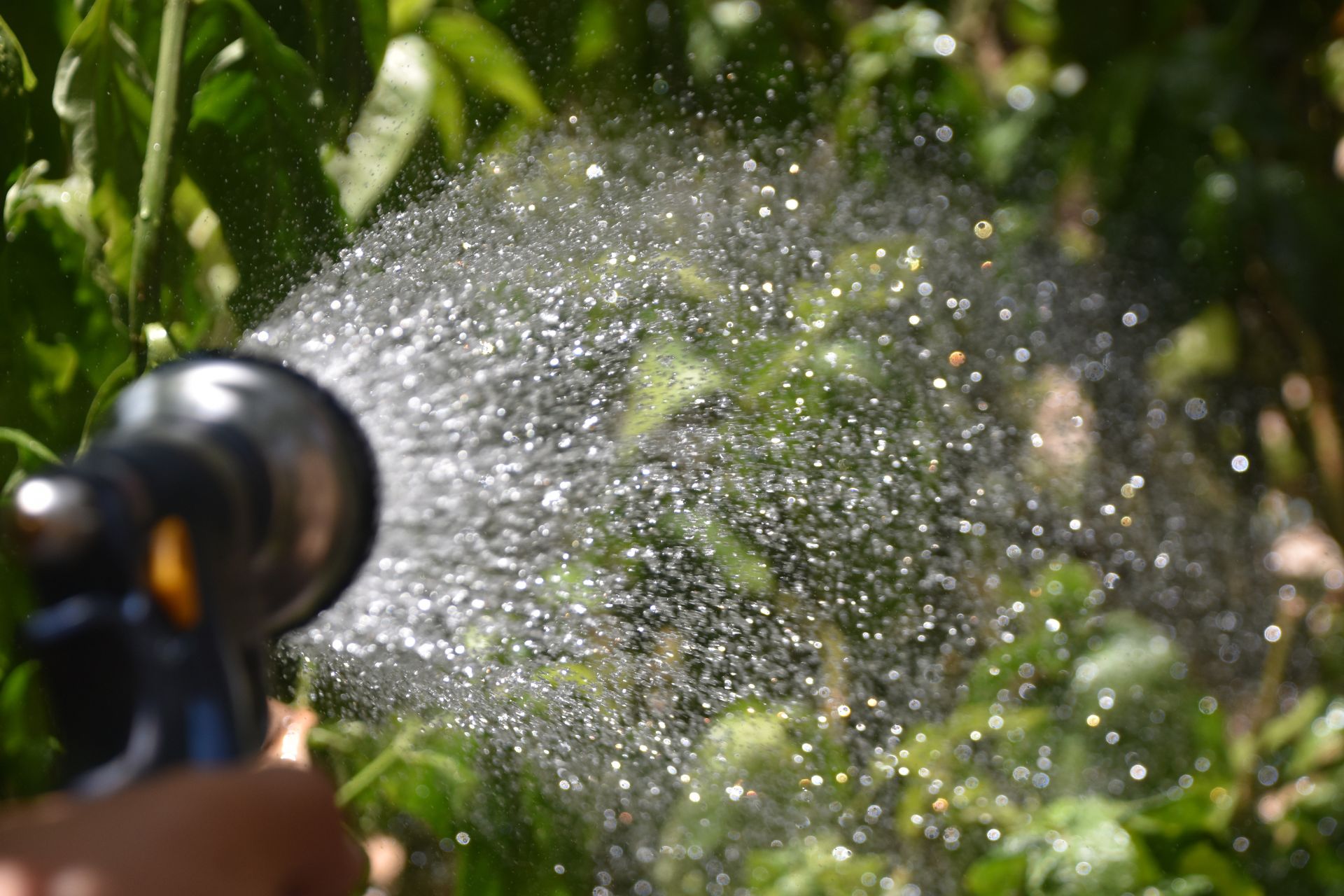
Kratom requires a regular supply of H2O, but the medium should have excellent drainage to avoid water-logging issues. Add water before the soil dries out to prevent dehydration, which can make the tree wither and die.
Besides nutrients and water, the plants need adequate sunlight with some hours of shade to mature. When cultivating outdoors, the trees prefer climates in the 9a, 9b, and 10a USDA hardiness zones.
You can grow kratom inside and provide the correct conditions if you don’t reside in areas with similar environmental elements.
Yield
Every commercial or hobbyist grower yearns for massive harvests after hard work and dedication. The kratom yield depends on various factors, including the growing conditions you provide.
Take proper care of the plants throughout their life cycle to increase the number of leaves you harvest. Cultivating kratom trees requires patience, since they can take two or more years to mature fully.
You need sufficient vertical space if you’re an indoor grower, as the plants stretch tall. Transfer them to an outdoor space after about a year to promote maximum growth.
Once fully mature, the tree’s height can reach up to 100 feet and about three feet in diameter. The plant is typically ready for harvest when you notice the leaves are almost falling off.
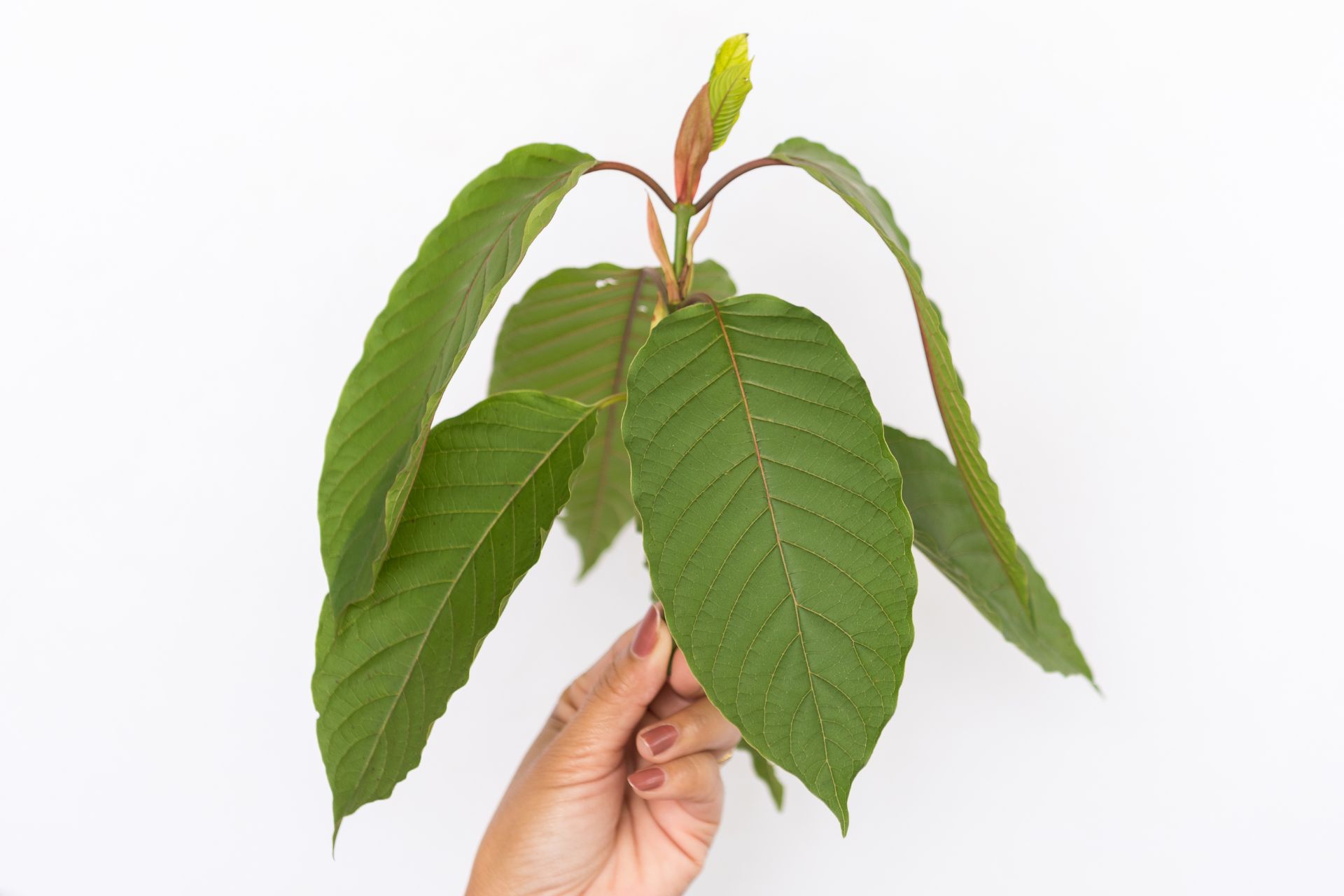
Carefully prune or trim the leaves from the stems to harvest the plant. Only pick the healthiest and most mature foliage to get a high-quality yield. Leave the plant to grow and develop new vegetation for the next season.
After harvesting, wash the kratom leaves and select the healthiest ones to dry. This process turns the raw foliage into a fine powder to brew tea, make capsules, or infuse in a beverage.
How to grow kratom indoors
Though kratom trees thrive in tropical jungles, growing them in closed areas like a greenhouse is possible. Enthusiasts with minimal space can cultivate the plants on their balconies or opt for a tent.
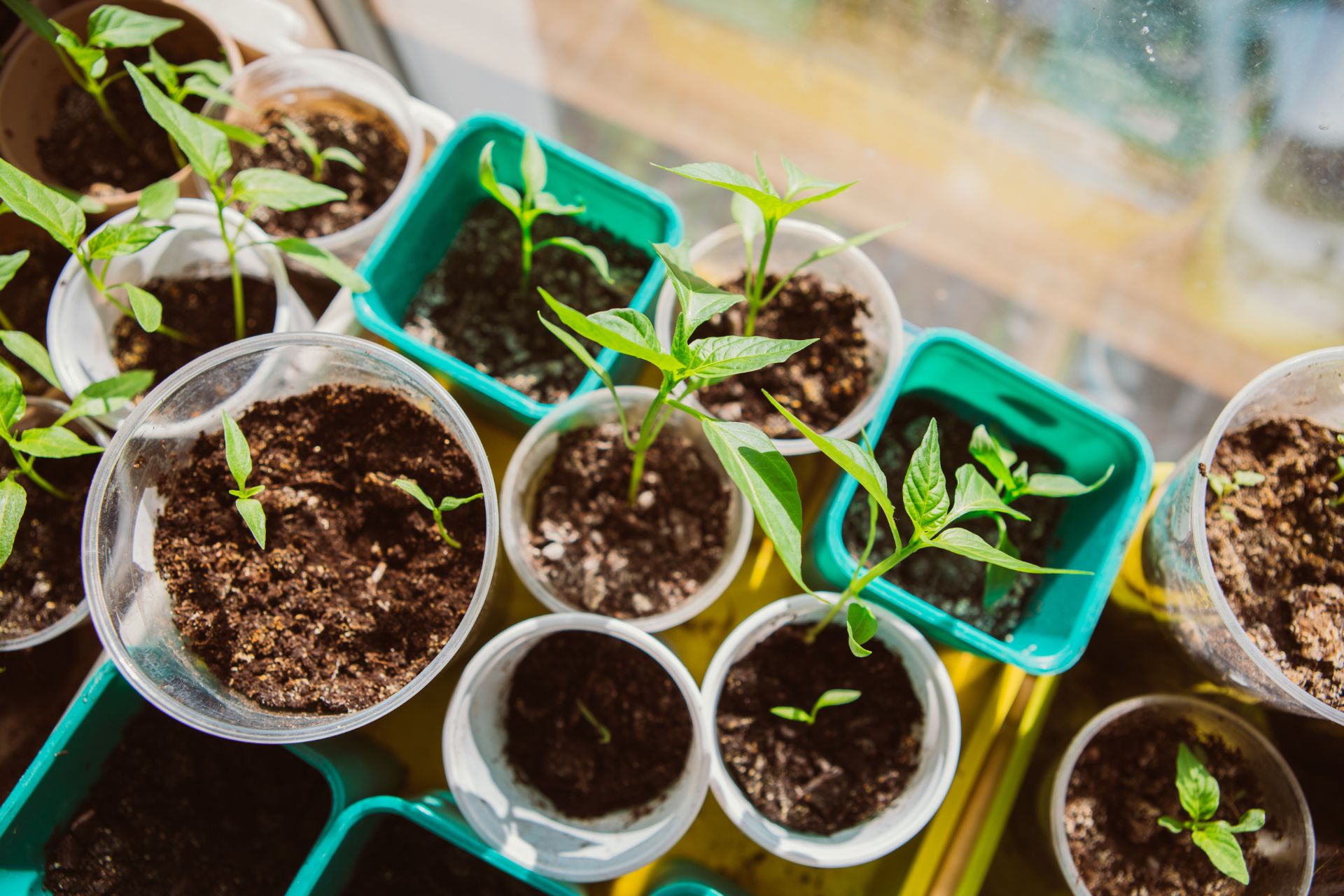
What does it take to grow kratom indoors? There are several requirements for cultivating high-yielding trees inside a tent or greenhouse.
Planting materials
Choose between seeds or cuttings before starting your cultivation journey.
The former takes longer and consumes more resources, since you must wait for germination. The other downside to growing seeds is their low viability. Some cultivators report that only about 20% of kratom seeds germinate and mature into healthy plants.
You could skip the rooting process and purchase cuttings from nurseries or established breeders. Cuttings save time and resources since you don’t have to wait for them to germinate.
Light
In their natural habitats, kratom plants receive adequate sunlight throughout the season. The jungles also provide shade and sufficient hours of darkness.
Indoor cultivators should invest in suitable growing bulbs. Some install HPS lamps that release the proper intensity the trees require, but they consume more energy and raise costs. Consider opting for modern LED bulbs, which are more effective and help reduce utility bills.
Some cultivators swear by an 18/6 light cycle, while others prefer a 12/12 schedule. For the best results, provide illumination for the same hours the plants would receive in their natural environment.
Humidity
Kratom grow zones, like Thailand and Indonesia, experience moderate to high humidity, depending on the season. When cultivating these trees indoors, maintain similar conditions for optimum results.
High humidity results in healthy and smooth kratom leaves. At lower levels, the foliage may become rough and discolored. A digital hygrometer can help you determine the amount of moisture in the air.
Invest in a dehumidifier to lower the humidity in the grow room. Maintain the humidity levels at about 70% or more. Use a humidifier to raise the amount of moisture in the environment.
Temperature
Kratom plants perform well in hot and humid tropical climates. Growing the trees inside allows you to provide the best environmental conditions, promoting fast maturity and boosting productivity.
Maintain temperatures around 75–90°F indoors. The trees also do well at about 68°F. It’s essential to note that artificial lights may emit heat, raising the degrees. Avoid keeping the lamps too close to the plants.
The grow room should have proper ventilation to regulate temperatures while promoting aeration. Install a fan that promotes windy conditions indoors, mimicking the natural environment that kratom prefers.
Grow the trees in large containers to enhance proper root development. Using breathable pots is advisable to increase soil aeration and prevent water-logging.
Feeding
Indoor kratom trees require proper feeding to reach maturity and produce highly potent leaves.
Ensure you provide adequate water to the plants, from germination to harvesting. Enrich the growing medium with nutrients from organic and inorganic fertilizers. These minerals boost the development and health of the crops.
Can you grow kratom in the US?
Understanding kratom’s legality in the US is important before beginning your growing journey. The herb gained mainstream attention in the early 2000s when some Americans started replacing various medications with this plant.
After gaining more popularity, the Food and Drug Administration (FDA) attempted to ban the herb in 2012 but was unsuccessful. In 2014, enthusiasts formed the American Kratom Association (AKA) to advocate for the plant’s legality.
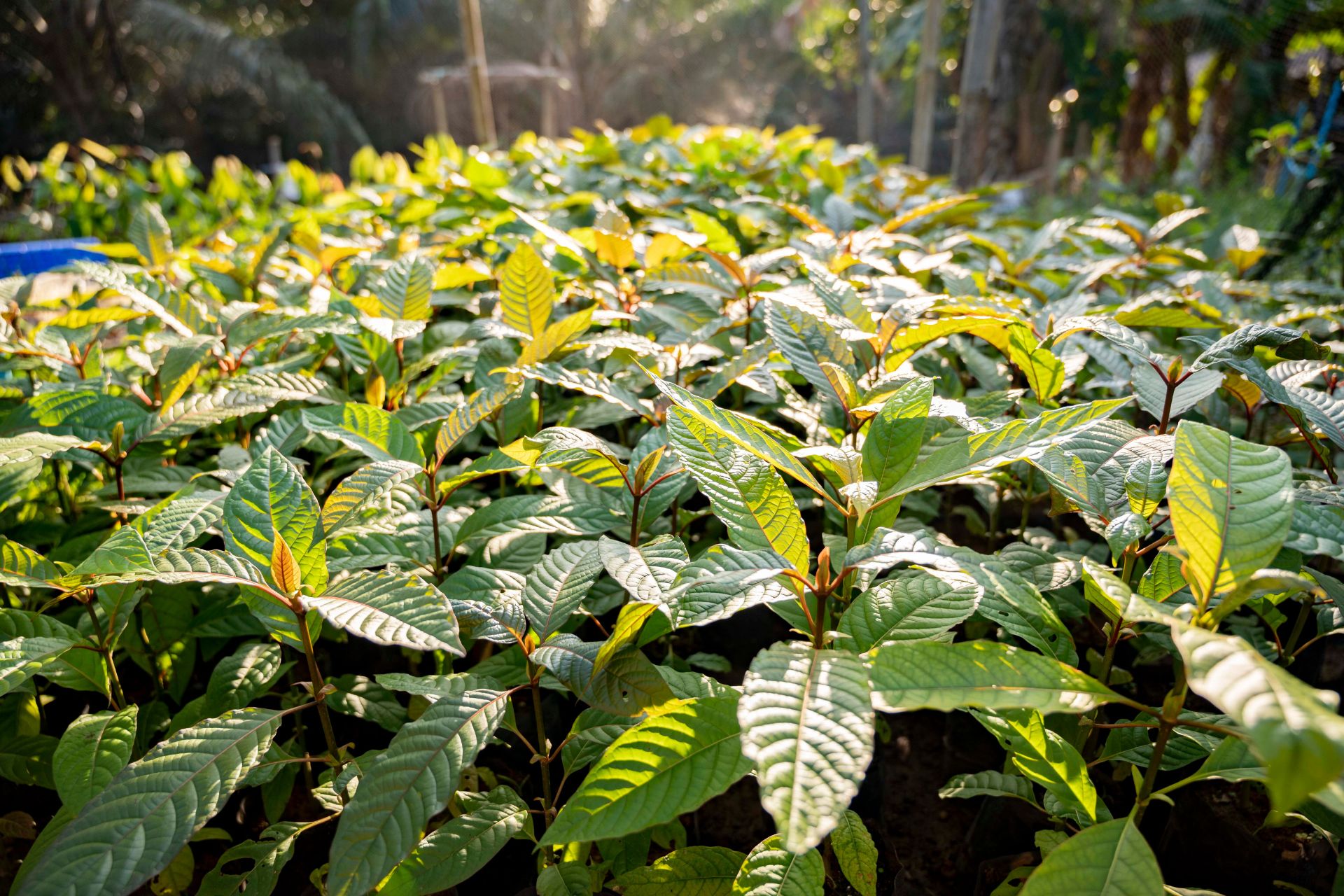
The Kratom Consumer Protection Act (KCPA) outlines the requirements to sell or possess this herb. It directs vendors to label their products precisely and provide third-party testing certificates showing that their supplements are pure.
States like Arizona and Georgia adopted the KCPA to regulate the selling, distributing, and possessing of kratom plant products.
Though the FDA has made attempts to ban the herb, buying, selling, consuming, and possessing kratom in the US is federally legal.
State governments make their own decisions about regulating and restricting kratom. As more people advocate for this plant, authorities relax and decriminalize the strict laws.
Before setting up your kratom garden, research whether the herb is legal in your area. If the local authorities criminalize the plant, it’s best to avoid cultivating it.
Friendly kratom grow zones include Wyoming, West Virginia, Delaware, and Florida. These state governments don’t impose regulations on cultivating, buying, or possessing the herb.
Grow kratom like a pro
Ready to give this plant a try? Use this guide to cultivate kratom like a pro and have an all-year-round supply. Your tree can grow to a massive height and yield potent leaves with the proper care and climatic conditions.
Do you want to skip the growing process and enjoy the benefits of this herb? Get pure kratom products at Kratom Country. We stock red, green, and white strains to satisfy various needs.
We go the extra step to carry out independent laboratory tests determining the powder’s purity, safety, and potency. This process ensures that every batch we release is high-quality, with no contaminants or additives.
FAQs about growing kratom plants
Do you have more questions about growing kratom? Here are answers to common queries about cultivating this herb.
Can I grow kratom hydroponically?
Kratom thrives in hydroponics since it’s rich in nutrients and water. The setup should be large enough to accommodate the plant’s massive root system.
What are the best practices for pruning and shaping kratom plants?
Kratom requires regular pruning to achieve a bushy structure rather than mature tall. Trim excess leaves and cut the top-most stem to encourage lateral growth. Carry out the training techniques when the tree is still young.
How can I protect my kratom plants from pests and diseases?
Maintain the right conditions, water correctly, and supply the kratom tree with adequate nutrients to prevent diseases like mold and mildew. Keep the plants indoors or covered when outdoors to protect them from parasites.
What’s the best time of the year to grow kratom plants?
The best time to sow kratom seeds is in February after the frost is over. Indoor growers can plant this tree anytime of the year.
What are the signs of overwatering or underwatering kratom plants?
You might be overwatering your plants if the leaves start falling off or turn yellow or brown on the tips. Moldy stems, root rot, and wilting indicate excess water. Drooping or curling leaves, stunted growth, dry soil, and discolored foliage are also red flags.
About the Author

Camila Millson is an experienced technologist of quality kratom products. She has over five years of working experience at Kratom Country.
Camila specializes in making kratom capsule technology. She also has extensive experience in developing technology for kratom tea.
Working for a large company, she is involved in the manufacturing processes of kratom powder, capsules, and other products. As well, she is knowledgeable about kratom legalization and can advise clients on these issues.
Comments